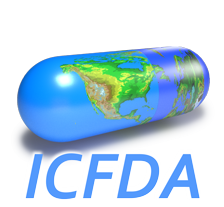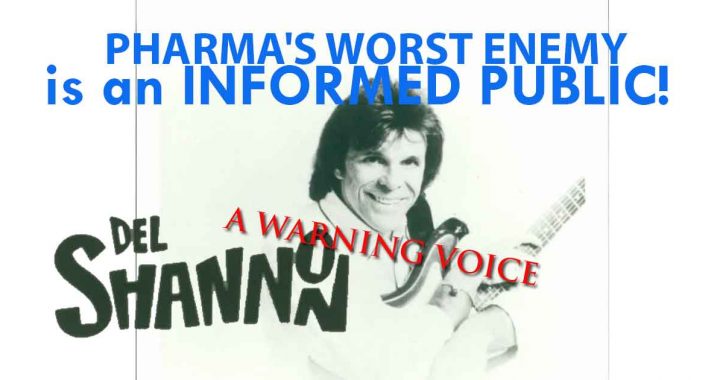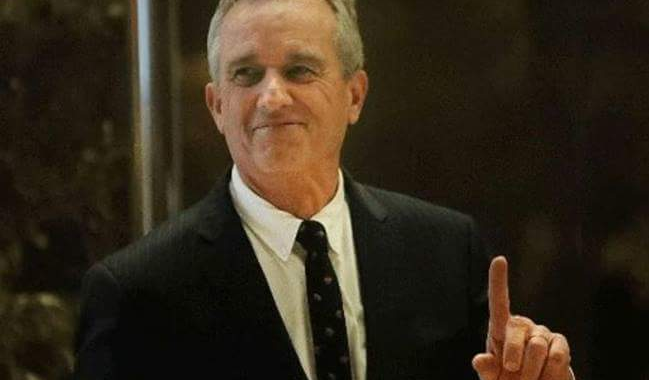NOTE BY Ann Blake-Tracy:
EXACTLY WHAT I HAVE FEARED AND WARNED OF FOR YEARS NOW WITH THE WIDESPREAD USE OF ANTIDEPRESSANTS. THE MANIC REACTIONS OF THESE DRUGS PRODUCE WILD SPENDING AND WE ARE SEEING IT EVERYWHERE TO THE POINT THAT WE HAVE NOW REALIZED IT HAS AFFECTED US ALL.
Paragraphs 24 through 29 read “Even if readers could assume that the preceding section convincingly answers the question of “what is the source of funds?”, they are left with the more vexing question of “why?”, that is – why would investors accept higher risks in the stock markets at higher price-earnings (PE) multiples with greater economic uncertainty; combined with continuing bad news.”
“The answer could well be something that market commentators rarely think about: namely the mood swings
of the average investor. In other words, what is the role of specific drugs such as antidepressants in the current makeup of the market? Is it possible that the consumption of antidepressantshas pushed investors to takegreater (and growing) risks on the stock market?”
“Firstly, it must be acknowledged that I am on a well-trod rather than radical path here. Many years ago, a respected medical journal made the same point albeit about a different bubble. This was recounted by Michael Lewis, writing in Slate (article dated August 13, 2002) as follows:”
“When people talk about the mood in the financial marketsthey tend to assume that the market drives that mood. But of course it doesn’t, not entirely. A few years ago a piece in the University of Michigan medical journal argued that the reason the Internet bubble reached such ridiculous heights was that huge numbers of investors were now taking drugs that lowered their inhibitions.With a third of the US investing population on Prozac or some other mood-enhancing drug, the paper concluded, it was no wonder that so many people believed the market would simply keep rising.”
“Since he wrote that article, sales of antidepressants and related psychiatric-treatment drugs have increased dramatically in the US. Evidence suggests that the rapid increase in the sales of antidepressants could well have sown the seeds of the financial crisis in 2005-06 and later on. The following are excerpts from an excellent article in How Stuff Works titled ‘Why are antidepressants the most prescribed drug in the US?’:
“In 2007, the Centers for Disease Control and Prevention made an intriguing announcement. Antidepressants were the most frequently prescribed drug, overtaking the runner-up, high blood-pressure medications, by five million prescriptions. The study reported that doctors racked up 118 million prescriptionsfor antidepressants in 2005 (out of a total of 2.4 billion prescriptions). … Antidepressants have the power to change your moods, and they accomplish this by affecting the amount of serotonin and norepinephrine in the brain. Serotonin and norepinephrine are neurotransmitters, which travel through neurons in the brain. Scientists don’t know a great dealabout how these neurotransmitters affect your mood. But they do know that when antidepressants alter how neurotransmitters travel, it stabilizes your emotions. … So what’s the reason behind the rising number of antidepressant prescriptions? One reason is that, despite their name, antidepressants are not prescribed solely for depression anymore. They are also used to treat chronic pain, anxiety, panic disorder, obsessive compulsive disorder and even eating disorders. … You can’t really address the reasons for antidepressant popularity without addressing the business of antidepressants.”
http://www.atimes.com/atimes/Global_Economy/KF30Dj05.html
Jun 30, 2009
The Jackson factor
By Chan Akya
On the wild wild west that the Internet has now become, I pulled up over the weekend a video that had been sent to me recently with a slightly mysterious one-liner in the e-mail. The video starts off with a fairly generic premise: There are two teams each containing four people; one team wears black and the other white, and each team carries a basketball. They stand in a tight circle around the middle of a basketball court, and the announcer intones: “Here is a test: count the number of times that the team in white passes the ball.”
They duly start passing the ball, and of course the action becomes more intense. After about 20 seconds, the game stops. The announcer then comes across.
“The answer is 13. But did you notice the moonwalking bear?”
Then the video replays, and of course, now that one has been asked to look for the moonwalking bear, there it is, popping in
from the right of the screen towards the left, as it slowly moonwalks through the people passing the ball.
The point of the video is that when it comes to general awareness, the human brain can be easily fooled into overlooking the most obvious thing in front of it; much like the idea that a moonwalking bear in the middle of a basketball court could prove invisible, today’s stock market rallies are doing the same to sane investors globally.
The other reason the phrases “black and white” and “moonwalking bear” resonate in the mind is the untimely death of the King of Pop, Michael Jackson, last week in California. I have devoted the last part of this article to explaining what possible symmetry exists between the life of a flawed genius and the trajectory of today’s stock markets.
Explaining the surge
Before doing that though, a quick recap of where we recently left off on the markets. Global stock markets have rebounded sharply from their lows in the beginning of March, even as macroeconomic data have lagged or, indeed, in most cases contradicted the evidence being expected by stock markets.
1.In the epicenter of the crisis – the US economy – consumer demand continues to decline even as business capital investments have declined in most cases; bankruptcies of companies (including of very large ones such as Chrysler and General Motors) have added to the pall of gloom.
2.Other developed countries like the UK, Germany and Japan all continue to show significant amounts of pain with their economies contracting – due to the housing collapse in the UK and thanks to plummeting export demand for the other two – which has further led to demand shrinkage for consumers globally.
3.While Asian nations have rebounded nicely from the bottom of last year, their ability to forge an independent path from US and European consumers still remains a matter of debate; data indicate that countries with strong government stimulus programs (for example China) have done better than those without (such as South Korea).
4.The spread of the financial crisis into Eastern Europe has pulled countries ranging from Kazakhstan to Latvia into a sharp downward spiral; further contagion to countries such as Bulgaria and Hungary (which are members of the European Union) will mean in effect the opening of a new front in the march of the global financial crisis.
To be sure not everything is gloom and doom as on the other side of the equation, we have some bits of good news.
The precipitous decline in US jobs (and those in Europe) appears to have tapered off, with the numbers for May coming a good 200,000 better than expectations (a loss of 350,000 jobs rather than the Wall Street survey of 550,000 jobs lost). Still there is much unresolved here, in particular the role of the birth-death model that appears to have contributed more than a million jobs to the economy over the course of this year, even as overall jobless claims and the ranks of those on the dole has skyrocketed.
The decline of supply as well as the stockpiling of commodities by countries such as China have helped to generate price rises for producers of such commodities, albeit into a similar rally as last year when prices galloped in the second quarter. This has helped resource-rich economies such as Brazil, the countries of the Middle East and others.
All of which leaves many market observers flummoxed as to the origins of the current bout of exuberance in global stock markets. There are two important questions that appear unresolved:
1.What is the source of the funds that are pouring into the stock markets globally?
2.Why are investors willing to accept much higher price risks now compared with last year?
The “what” question is only partially answered by the overall increase in America’s savings rate, which has reversed from its negative position until last year into a positive one this year. Much of that rise though is explained by the rise in allocations to government bond holdings – that is, more Americans are buying bonds than ever before, or to put it more precisely, more bonds are being bought in America than ever before. There is the question of declining leverage as banks cut the overall borrowing limits of millions of Americans after house price and equity market declines last year. The rise in the US personal savings rate is thus not likely to have been sufficient to generate a NET increase in stock market allocations this year. At least, not by itself.
A family of thought has quietly emerged that the mythical “Plunge Protection Team” in the United States may actually not be so mythical after all, even if it is ever so unlikely to be an actual team taking orders from an actual boss. In other words, what if there are a number of people whose raison d’etre is carrying out the wishes of the US government in regards to the stock markets?
After all, a government that has so openly intervened in the nationalization of companies (GM, Chrysler), allocated plum mandates without any bidding (managing US Troubled Asset Relief Program assets), reversed priority preferential rights of various claimholders (stockholders vs labor unions), injected capital and received it back on an arbitrary basis (US banks), and on and on, can prove to be both fertile and lucrative for some kinds of businessmen.
Other commentators have skipped this step entirely and gone to the actual source of the market rally being US government funds. Indeed, the well respected Alan Abelson writes in the most recent (June 29) issue of Barron’s:
We have had a hunch for a while now that a quantum gob of the stimulus bucks, under whatever guise and through whatever channel, was finding its way into the stock market. Which would explain a lot of things. Like the size and speed of the surge since the dark days of early March. The more than passing strange upward bursts of prices toward the end of so many sessions. And the overall racy character of so much of the market.
I have noticed precisely the same things in US trading, the kind of stuff that makes technical models bleep red (mixing my metaphors) because the volume vs price comparisons go wonky quite quickly. It is thus possible that coordinated action of some sort is increasingly palpable, if not quite visible, in the trajectory of the US stock market.
Much like the video experience I described in the first section, it is highly possible that investors watching the stock markets on a regular basis (“the Dow is up 100 … wait, it’s down a 100 now … ah it’s back up again by 50 now … “) could actually miss the presence of anomalies or indeed quietly become a part of such anomalies over a period of time.
More vexing question of ‘why?’
Even if readers could assume that the preceding section convincingly answers the question of “what is the source of funds?”, they are left with the more vexing question of “why?”, that is – why would investors accept higher risks in the stock markets at higher price-earnings (PE) multiples with greater economic uncertainty; combined with continuing bad news.
The answer could well be something that market commentators rarely think about: namely the mood swingsof the average investor. In other words, what is the role of specific drugs such as antidepressants in the current makeup of the market? Is it possible that the consumption of antidepressants has pushed investors to take greater (and growing) risks on the stock market?
Firstly, it must be acknowledged that I am a well-trod rather than radical path here. Many years ago, a respected medical journal made the same point albeit about a different bubble. This was recounted by Michael Lewis, writing in Slate (article dated August 13, 2002) as follows:
When people talk about the mood in the financial marketsthey tend to assume that the market drives that mood. But of course it doesn’t, not entirely. A few years ago a piece in the University of Michigan medical journal argued that the reason the Internet bubble reached such ridiculous heights was that huge numbers of investors were now taking drugs that lowered their inhibitions. With a third of the US investing population on Prozac or some other mood-enhancing drug, the paper concluded, it was no wonder that so many people believed the market would simply keep rising.
Since he wrote that article, sales of antidepressants and related psychiatric-treatment drugs have increased dramatically in the US. Evidence suggests that the rapid increase in the sales of antidepressants could well have sown the seeds of the financial crisis in 2005-06 and later on. The following are excerpts from an excellent article in How Stuff Works titled “Why are antidepressants the most prescribed drug in the US?”:
In 2007, the Centers for Disease Control and Prevention made an intriguing announcement. Antidepressants were the most frequently prescribed drug, overtaking the runner-up, high blood-pressure medications, by five million prescriptions. The study reported that doctors racked up 118 million prescriptionsfor antidepressants in 2005 (out of a total of 2.4 billion prescriptions). … Antidepressants have the power to change your moods, and they accomplish this by affecting the amount of serotonin and norepinephrine in the brain. Serotonin and norepinephrine are neurotransmitters, which travel through neurons in the brain. Scientists don’t know a great dealabout how these neurotransmitters affect your mood. But they do know that when antidepressants alter how neurotransmitters travel, it stabilizes your emotions. … So what’s the reason behind the rising number of antidepressant prescriptions? One reason is that, despite their name, antidepressants are not prescribed solely for depression anymore. They are also used to treat chronic pain, anxiety, panic disorder, obsessive compulsive disorder and even eating disorders. … You can’t really address the reasons for antidepressant popularity without addressing the business of antidepressants.
In 2004, brand-name antidepressant companies made more than $14 billion. … These sales mean big business, and direct-to-consumer advertising (such as television commercials) has helped fuel it. Studies indicate that this kind of advertising has contributed to the growth in prescriptions. … When patients see commercials for antidepressants, such as Zoloft, and think that it can help them, they go to their doctors and request it. Doctors are more likely to prescribe an antidepressant when a patient specifically asks for it. … Some believe doctors are usually too anxious to diagnose someone with depression.
The symptoms for depression from the Diagnostic and Statistical Manual of Mental Disorders (DSM-IV) include: depressed mood; taking less pleasure in life; changes in appetite; changes in sleeping pattern; restless habits; lack of energy; feeling worthless or guilty; inability to concentrate; suicidal thoughts. … But even with these parameters, distinguishing severe depression from natural periods of feeling ‘down’ can be a murky call. Professor Gordon Parker thinks doctors interpret the common blues as clinical depression all too often. … In a long-term study he conducted, he found that a great majority of people could be diagnosed as depressed on the criteria that doctors use. He took this to mean the criteria for depression is too loose.
Given that little refresher, it remains to establish what the trends for actual antidepressant sales are in the US (and similar markets such as the UK). In this respect, without the benefit of sales figures for the first half of this year, the points of reference remain anecdotal. However, even that offers powerful evidence:
…[In] the US there were 164.2 million prescriptions dispensed for antidepressants in 2008, compared to 143 million in 2004, according to IMS Health, a healthcareinformation company. [These figures do not agree with the previous reference cited, presumably due to separate classifications of drugs as well as the rising availability of non-brand generic drugs to treat depression. Another article cites the figure at 200 million prescriptions; and a 15% increase in sales value in 2008 over the previous year – Chan Akya.]
… Much is at stake. Antipsychotics, which had $14.6 billion in sales last year, were the top-selling class of US medicines; antidepressants brought in $9.6 billion, says IMS HEALTH. USA Today, June 3, 2009
In the UK, The Guardian reported on June 21, 2009:
… Last year [2008] in England there were 2.1 million more prescriptions of antidepressants than in 2007, leading to concerns that doctors are increasingly supplying the drugs as a “quick fix” without attempting to address the underlying cause of the problems. In total, 36 million prescriptions were given out, an increase of 24% over the past five years.
Going back into the starting question, it is clear that the “why” question may well have much to do with mood-altering drugs. Put crudely, give a bunch of people who have lost their life savings on their houses and pension plans (previously known as 401Ks and now dubbed 104Ks) a lot of antidepressants and you could well see a startling increase in risk taking; such as what we see in the markets today.
Much like the risks of taking on a drugs-addled street fighter, the simple course of action for outside investors is to stay away.
So what does this have to do with Michael Jackson?
Given the title of this article pulled in the name of Michael Jackson, the obvious question probably occurs to many readers at this stage; namely what is the connection with the American stock markets of today with the death of one of the most revered pop stars of all time?
The man who was the very embodiment of a flawed genius in every sense of the phrase was also widely reported to have incurred debt far in excess of even his own fabulous wealth. In that respect, the trajectory of his leverage probably mirrored that of America itself, after the Berlin Wall came down 20 years ago, ushering in a period of grand excess.
The second aspect of this article, namely the soaring sales of drugs to Americans, was also being cited as a principal cause of his death. Working hard to regain physical fitness to start off his London tour next month, Michael Jackson is alleged to have consumed vast cocktails of drugs that were designed to keep his particular demons at bay. In the end, they may well have contributed to his fatal cardiac arrest and coma.
Looking at the US (and global) stock markets today, I rather fear that a similar cocktail of drugs and debt has been masked, like the moonwalking bear, in all the ups and downs. And much like the deadly cocktail helped to end the life of one of the greatest musical talents of our time; something dark and ugly could well await global stock investors around the next corner. Or the one after that.
Health warning: I am here repeating my usual warning for readers not to take the words of a pseudonymous writer such as myself when it comes to market direction or their personal investment choices. You must consult the right professional for such advice, and where such a professional cannot be found (presumably all across the US and Europe now), use your common sense.
(Copyright 2009 Asia Times Online (Holdings) Ltd. All rights reserved. Please contact us about sales, syndication and republishing.)





0 thoughts on “Antidepressants: Coiuld Have Contributed to Stock Market Crash: U.S.A.”